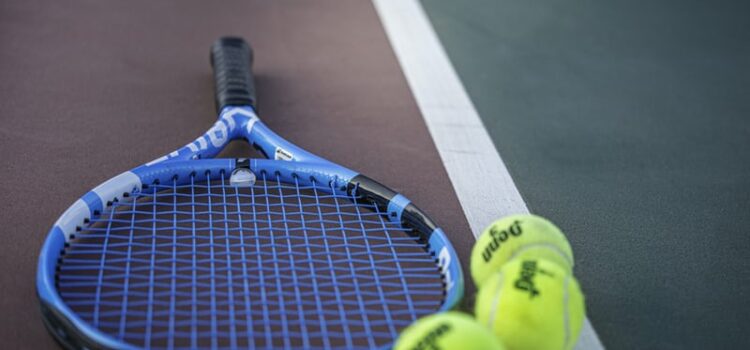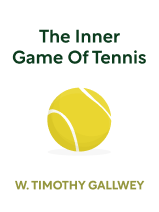

This article is an excerpt from the Shortform book guide to "The Inner Game of Tennis" by W. Timothy Gallwey. Shortform has the world's best summaries and analyses of books you should be reading.
Like this article? Sign up for a free trial here .
Do you want to know how to improve your tennis game? What steps can you take to get better?
Learning how to improve in tennis is about more than fixing your technical skills. You have to fix your bad habits both physically and mentally to compete at a high level.
Read more about how to improve in tennis below.
How to Improve Your Tennis Game by Fixing Bad Habits
Even once we start learning about Self 1, Self 2, and the Inner Game, it’s easy to fall back into bad habits.
Tennis players (or golf players, or anyone else) will “groove” strokes: They’ll start swinging one way and then continue to swing that way, creating a deep habit or “groove” that becomes harder to change the longer it’s done. These patterns do serve a function—getting the ball over the net—and their success at getting the job done reinforces the pattern. However, although the habit might accomplish the goal, it often doesn’t do it efficiently or consistently.
When players are attempting to break out of grooves they don’t like, you’ll see them exerting a ton of energy, starting to do the thing they don’t want to and then gritting their teeth and correcting themselves.
Let’s consider the usual process of learning, which goes something like this:
- You criticize yourself for your past behavior: “You’re rolling over your forehand again. You always do this. How many times do you have to be taught to stop?!”
- You verbally argue with yourself about the need for change: “Hit the ball out front! Follow through!”
- You exert yourself to make sure you’re doing the new thing correctly, using all of your Self 1 energy to focus on your issue.
- You create a vicious cycle as you criticize yourself when you don’t immediately see results: “What’s wrong with you?! You can’t even fix your problems!”
Building New Grooves
So, how do you fix these grooves? The best way to learn is not to try to break out of bad grooves but to start new ones, so you can learn how to improve your tennis game.
- Observe without judgment: Begin by swinging without any conscious control: Don’t try to change anything and let yourself fall into any grooves you have. As you’ve been taught earlier in this book, just observe carefully. You might see that you’re serving a lot of balls into the left side of the net.
- Identify your patterns and rhythm: Then get in touch with the rhythm of your stroke. It’s quite possible that just by doing these things, your stroke will begin to change. Let this happen. You might notice that you’re not following through much on your serve, for example.
If you do these first two things, you should have a good idea of what you want to change in your stroke, such as more spin on your serve or more power that allows you to hit further into the service box.
- Imagine the desired outcome: Next, picture the result you want: The ball going across the court with better accuracy and power or to a specific spot. Think about hitting a serve so that the ball barely clears the net and hits right in the back corner of the service box.
- Swing with a picture: Then, begin to hit again with this picture in your mind. If you don’t reach your desired outcome, ask yourself what’s wrong. If you can’t diagnose it yourself, you can ask a pro, who should show you how to improve your tennis swing, not just tell you what you’re doing wrong.
- Try out different feelings: Experiment with what the pro tells you. For example, hold your racket tighter or less tight and see what happens. Don’t try too hard at a fix, though, just experiment with different grips and observe the outcomes without judgment. It’s common for this process to lead to inconsistency at first, because you’re experimenting with lots of new habits and making lots of quick changes to your swing. Don’t worry or get down on yourself! You’ll start to develop new grooves that are better soon enough.
In following this process, you can see new outcomes or habits and start to form better grooves.
This Inner-Game process is focused on nonjudgmental observation and manifesting better results. The criticism that’s so essential to the usual learning process is totally gone. Instead of trying really hard to learn things with Self 1, we let go and allow Self 2 to learn.
The great thing about this is we already know how to do this. Think about how children learn: When they’re learning to walk, they don’t chastise themselves for not knowing how, they just replace their habit of crawling with walking slowly. Sure, they fall down a lot at first, but who cares?
Avoiding Self 1’s Return
One potential pitfall here is the return of Self 1:
- After making progress, students will sometimes go back to their old habits the next day, and won’t seem to mind, even though they are playing worse.
- This is because the kind of effort that is involved in Self 1-controlled players is driven by ego. It’s easy to believe in your own head that you deserve more credit when you exert energy than when you just let good results happen. Then, if you start to exert yourself more than is necessary, you’ll get back into your own head rather than allowing your body to move.
- This is often accompanied by the feeling that you understand the “secret” to playing well is “relaxing.” But relaxing won’t happen if you try really hard to relax.
- Instead, just give Self 2 the credit! Realize that your body is helping you succeed.
All these steps are important for knowing how to improve in tennis.

———End of Preview———
Like what you just read? Read the rest of the world's best book summary and analysis of W. Timothy Gallwey's "The Inner Game of Tennis" at Shortform .
Here's what you'll find in our full The Inner Game of Tennis summary :
- Why tennis is actually a mind game
- How to quiet the mind and concentrate intently
- Why your self-worth shouldn't be dependent on how you do in competition






